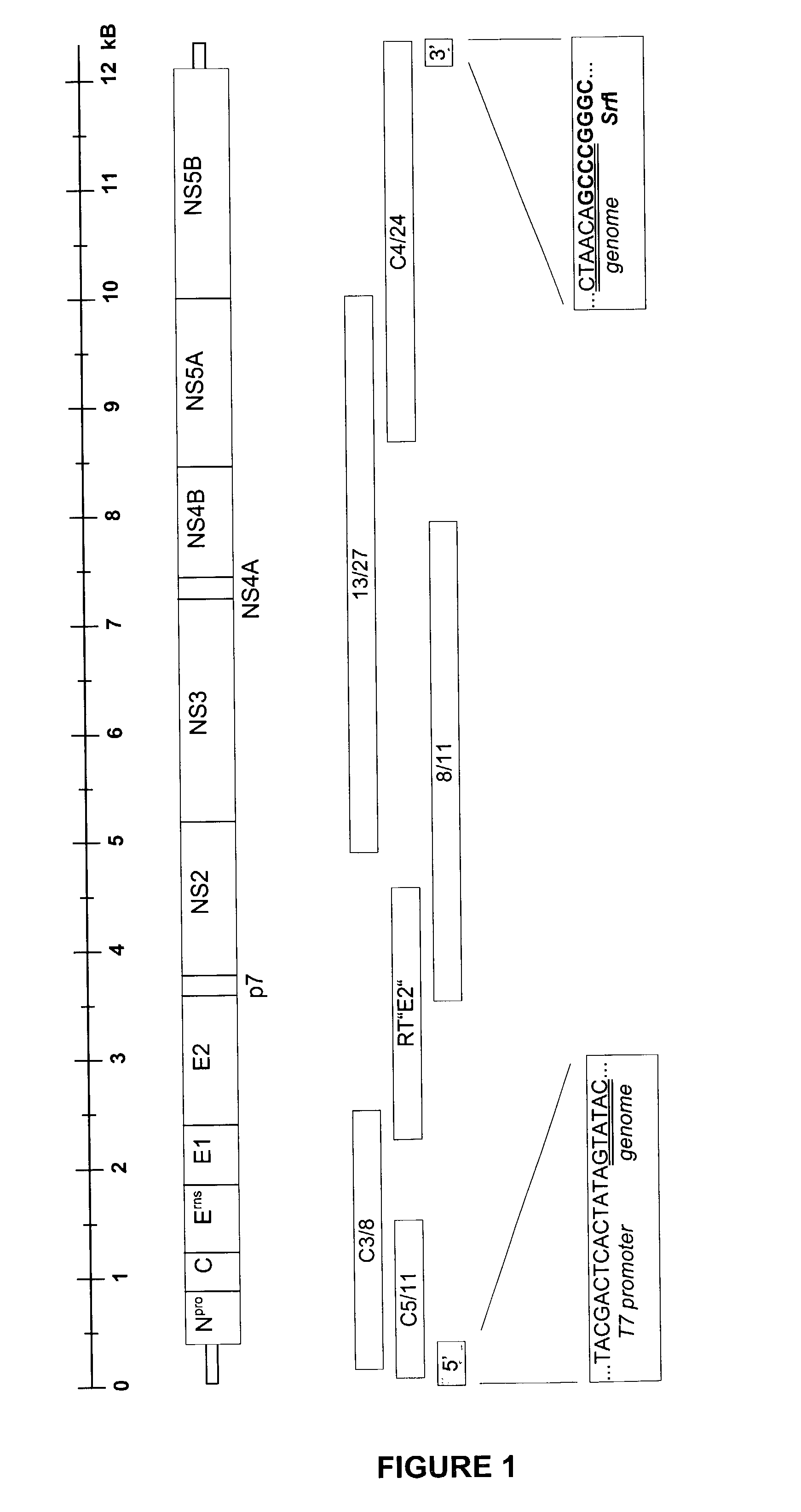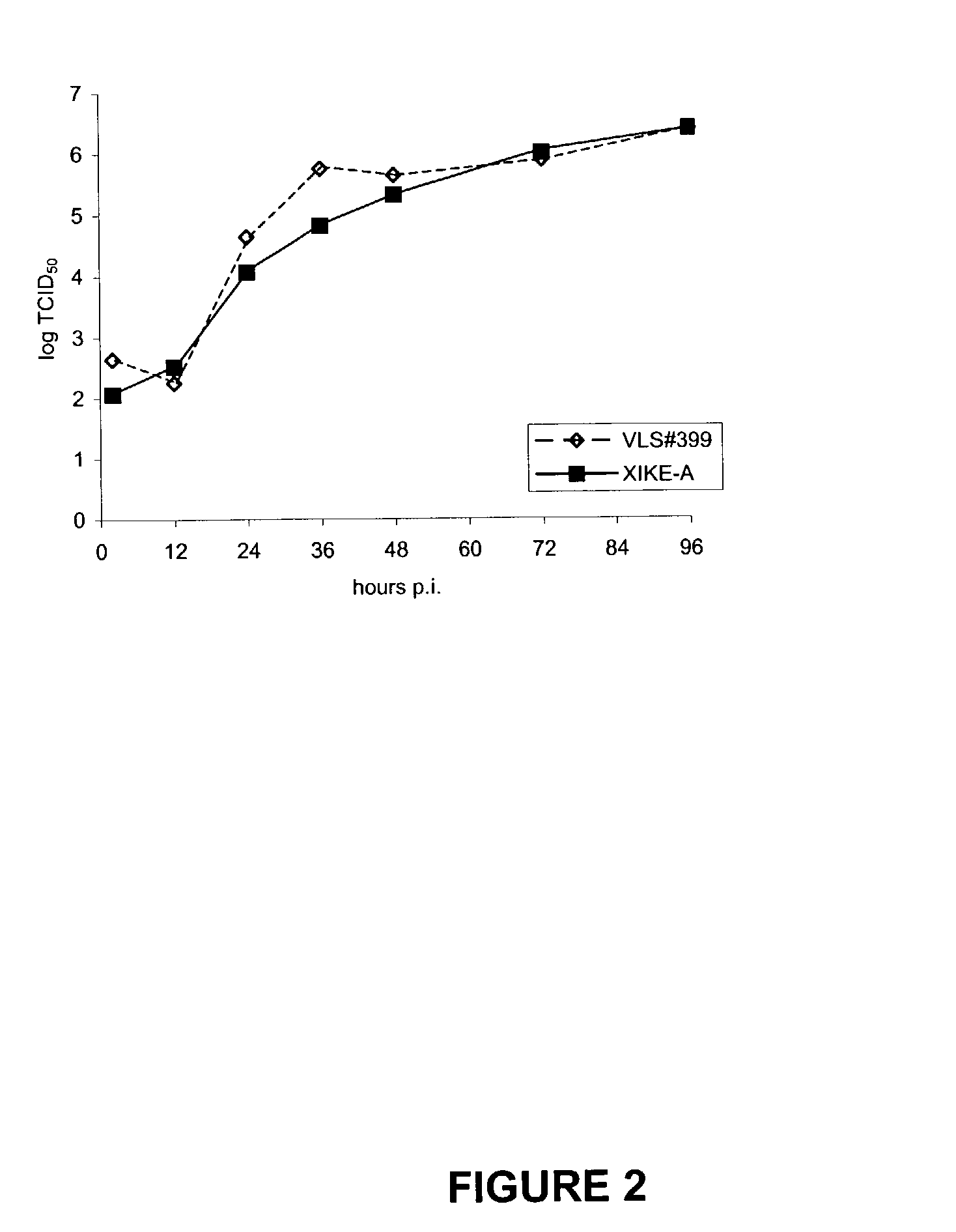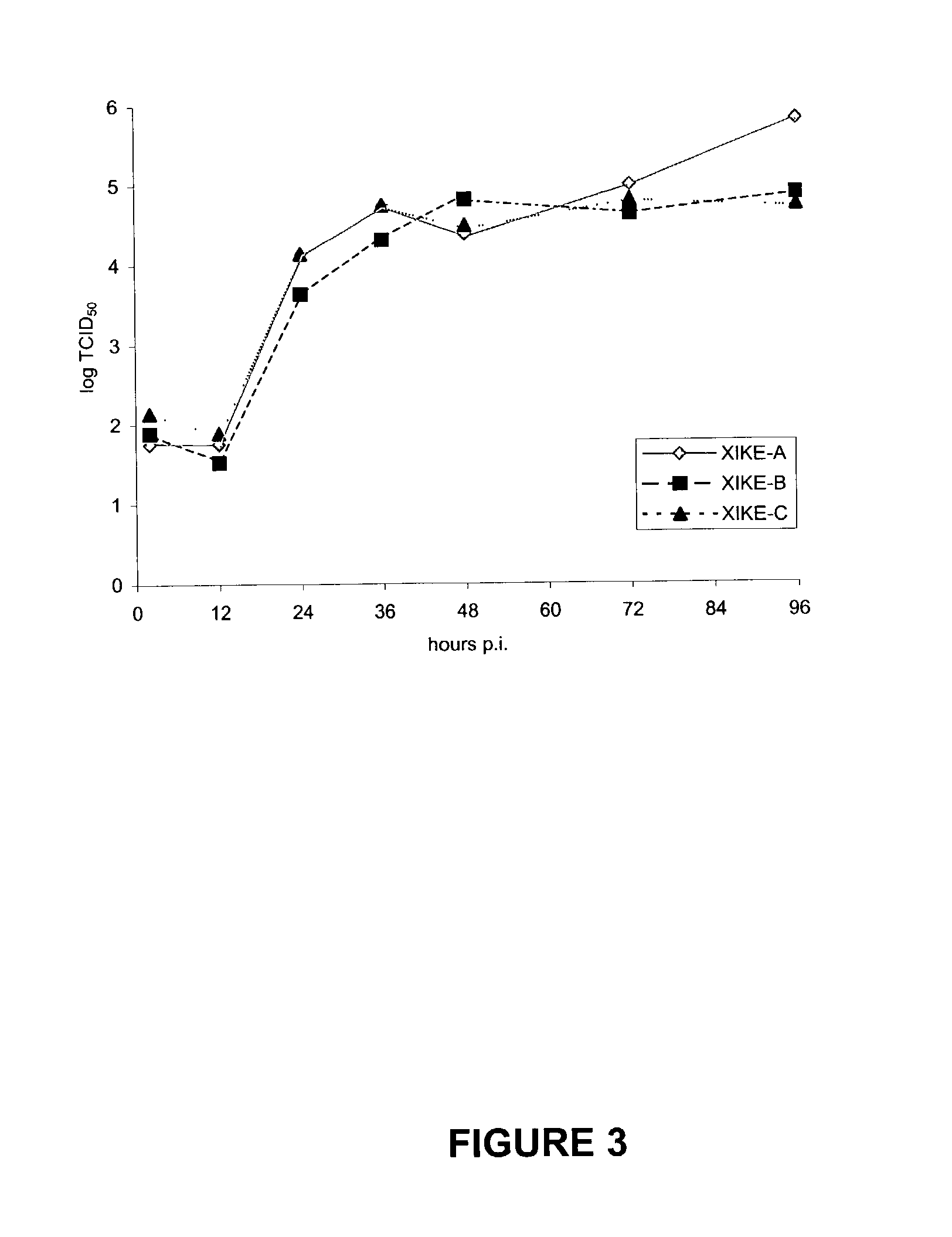Infectious bovine viral diarrhea virus clone
a bovine viral and clone technology, applied in the field of animal health, can solve the problems of the inability to kill the virus, and the inability to fully absorb the virus, and achieve the effect of reducing the symptoms of bvdv
- Summary
- Abstract
- Description
- Claims
- Application Information
AI Technical Summary
Benefits of technology
Problems solved by technology
Method used
Image
Examples
example 1
Materials and Methods
[0148]Cells and viruses. MDBK cells were obtained from the American Type Culture Collection (Rockville, Md.). Cells were grown in Dulbecco's modified Eagle's medium supplemented with 10% fetal calf serum (FCS; tested for the absence of pestivirus and antibodies against pestiviruses) and nonessential amino acids. Bovine viral diarrhea strain New York '93 (field isolate VLS#399) was kindly provided by E. J. Dubovi (New York State College of Veterinary Medicine, Cornell University, Ithaca). The virus underwent one animal passage and was designated “New York '93 / C” thereafter.
[0149]Infection of cells, immunofluorescence assay and virus peroxidase assay. Since pestiviruses are highly associated with their host cells, lysates of infected cells were used for reinfection of culture cells. Lysates were prepared by freezing and thawing cells 3 to 5 days after infection and were stored at −70° C. Unless indicated otherwise in the text, a multiplicity of infection (m.o.i.) ...
example 2
Experimental Design
[0197]Twelve pregnant heifers were selected from a BVDV negative herd. The following group of 5 / 7 heifers were included in the trial:
[0198]
No.InoculationVirusGroup 1:5One i. n. administration,XIKE-A3 ml in each nostrilGroup 2:5One i. n. administration,NY-933 ml in each nostril
Heifers were moved to the experimental facilities 8 days before inoculations. Pregnancy status was confirmed after transport into the experimental facility. Heifers were between days 60 and 90 of gestation on the day of inoculation. Inoculation took place for all animals at one point of time with 2.5×104 TCID50 / ml of the respective virus applied in 6 ml tissue culture supernatant.
[0199]Heifers were monitored for the presence of clinical signs of BVDV infection including abortions during the observation period. The experiment was terminated 9 weeks after infection. Non-aborted cows were slaughtered, the uterus examined and collected. Foetal organ samples were collected during routine necropsy ...
example 3
[0203]This study aimed to assess the efficacy of BVDV isolates against foetal infection. Efficacy of the NY93 infectious copy derivative BVDV recombinant (type II) with a deletion of the RNase function in the E(RNS) protein XIKE-B (H349Δ) is investigated to prevent fetal infection after an heterologous type I challenge.
[0204]Between day 60 and 90 is the most sensitive period for fetal exposure to BVDV. Therefore in this trial heifers derived from BVDV-free farm (and confirmed seronegative for BVDV) have been immunized by a single exposure with XIKE B (i.m.). Thereafter heifers were inseminated and between day 60–90 animals, when animals are supposed to be highly sensitive to BVDV fetal infection, a challenge infection with a wild type field virus was performed. The intranasal route for challenge was chosen as this mimics the normal route of infection in the field best.
Experimental Design:
[0205]Heifers were selected from a BVDV negative herd. The heifers were tested serologically and...
PUM
| Property | Measurement | Unit |
|---|---|---|
| Temperature | aaaaa | aaaaa |
| Fraction | aaaaa | aaaaa |
| Time | aaaaa | aaaaa |
Abstract
Description
Claims
Application Information
 Login to View More
Login to View More - R&D Engineer
- R&D Manager
- IP Professional
- Industry Leading Data Capabilities
- Powerful AI technology
- Patent DNA Extraction
Browse by: Latest US Patents, China's latest patents, Technical Efficacy Thesaurus, Application Domain, Technology Topic, Popular Technical Reports.
© 2024 PatSnap. All rights reserved.Legal|Privacy policy|Modern Slavery Act Transparency Statement|Sitemap|About US| Contact US: help@patsnap.com










